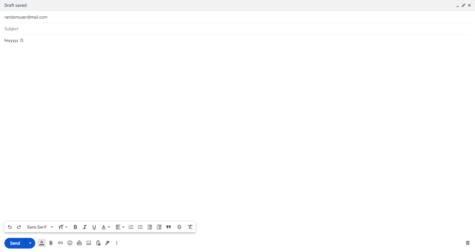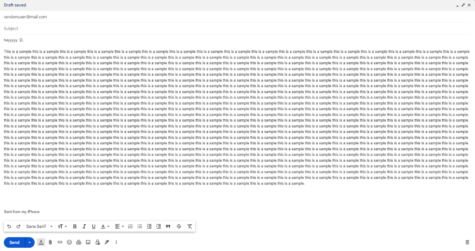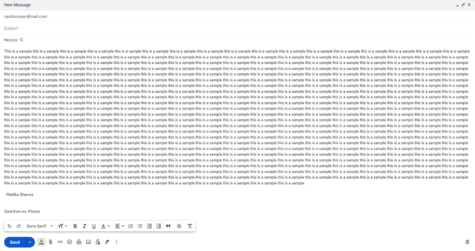Satire: Exactly 5 steps to email exactly what you think
May 16, 2023
A crisp white envelope lying against a sky-blue backdrop. This is the digitally-rendered icon that accompanies the Schoology announcements, college decisions and spam adverts that nothing short of barrage my notifications with “Hello”s and “Sincerely”s every single day.
My experience is hardly unique: around the world, over 4.2 billion people communicate via email. That’s over half of the global population chatting it up, conducting correspondence and evading Nigerian prince scams via platforms such as Gmail and Outlook. So unless you’re reading this article to avoid doing chores (no judgment here), you’re probably among these users, and if you’re looking specifically to sharpen your email-writing skills, you’ve come to the right place. Allow me to take you through my quick and easy process.
The first thing you want to do upon creating a new email is enter a subject line. Since the subject is practically the first a person sees of your message after opening their inbox, it’s vital that whatever you set it to both catches their attention and retains it.
But something boring like “Announcement” or “Update” has nothing on my kind-of-really brilliant approach: not entering a subject line at all. This shrouds the email in an element of mystery that rivals a Scooby-Doo episode, compelling the recipient to ultimately open the message and unlock the secrets lying within—even if these secrets manifest as an embarrassing video from sixth grade attached to an email reading, “look what I found in my Drive, lol.” Not that I’d know anything about that.
Next comes your greeting, and let me set the record straight about something: starting an email with “To Whom it May Concern,” no matter the purpose, is ample cause for concern in itself. Such a clinical, generic opener is no way to establish an emotional connection with your reader, especially when paired with a sans serif font that leaves just about any message sans the slightest bit of excitement. Instead, I suggest utilizing a markedly less formal phrase to start your message, like“hi :)” or “wassup >:D”—note the use of emoticons and stylistic lack of capitalization for extra flair.

The body of the message is where you get down to the nitty-gritty of why you’re writing, whether it’s asking a favor, responding to an inquiry or unsubscribing from an overzealous PTA mom’s newsletter. While Grammarly suggests keeping things short and sweet, why pass up the opportunity to crank out an essay that would make your English teacher weep with awe? It’s not like you’ll have the opportunity to showcase your A-E-C-E-C paragraph-writing skills anywhere else, and nothing screams ethos more than a seasoned writer (definitely no bias here).

For a proper ending to your email, you’ll want to remember a few crucial tips. The first is that, unlike your greeting, your closer can come off as overly sentimental and outright disingenuous—no one believes you’re sending “all your best” to the job interviewer who stood you up for the fourth time.
Second, never end the message with a “thank you” of any sort; if anything, the recipient should be grateful for the opportunity to have even laid eyes on the email (if you followed my instructions when writing it, that is). Lastly, if your device comes with a closer built in, take advantage of it: there’s nothing effortlessly classier than a neat little “Sent from my iPhone” to wrap things up.

When all is said and done, you should come away with an email that appeals to your intended reader but is still irrevocably, unequivocally you. All that’s left now is to read it over a couple of times—not to catch convention errors, just to admire your work—and sign your name. Hopefully, you’ll glean as much satisfaction from hitting “Send” as I do knowing I’ve saved yet another soul from composing a dreadfully mundane memo. Cheers, and godspeed on your future emailing endeavors.



